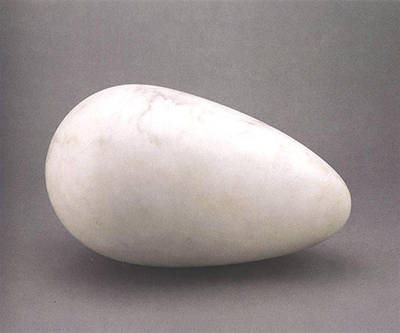A Sculpture for the Blind by Constantin Brancusi (1920) is permanently exhibited in the Museum of Art at Philadelphia, inside a crystal vitrine.
The label of the work of art and the institutional rationality of the museum crash with the remarkable ridiculous creativity of "sculpture for the blind" that exists only for operators. Brancusi made some pure abstract sculptures, even though he constantly found this term restricted. The beginning of the world in 1920 is an example of new development. The oval mentions the heads derived from Sleeping Muse and is particularly close to a blind statue of 1916. At The Beginning of the World, there is a simple way to embody global aspirations. The oval shape suggests the fertility of eggs and awakens ancient myths of universal origin, as the title emphasizes.
The Beginning of the World is among the many monuments in which Constantin challenged the recognized distinction between artwork and its origin. This traditional hierarchy has dissolved and has begun to function using the accumulation of features in contrasting substances. In doing this, he believed that the work of art had taken root in space. Read on for more information on Constantine's Sculpture for the Blind. The sculpture for the blind measures item measures11 7/16 x 6 11/16 x 7 1/8 inches. Its length is approximately from the elbow to the wrist or the dimensions of a medium-sized cat. Similar to a cat, it will be easy to place your lap and take your hands to hold it comfortably.
The object has a simple, durable and abstract shape, without sharp angles or corners. It lies the longest side towards the viewer and has two sides to the right and the left. The right side is larger and seems to swell, like the back of the baby's head. The volume decreases smoothly and unevenly throughout the length of the object. It ends with a smaller round dot on the left to accommodate a loose hand. The upper part of the body is a more flat and smooth rotating plane. The lower part describes a striking curve. The weight at the largest end of the object is higher, and the reduced end is slightly lower. It stabilizes at a central point from which the whole shape rises, making it seem weightless and elegant.
Its moderate curves restore the eroded planes of the river stone. The shape resembles an egg, but unlike perfection, it is enlarged, very elongated and asymmetric. These properties reveal that they are made by humans. Except for the thin fold line at the front, which is shorter than the finger length, the surface is uninterrupted and smooth.




